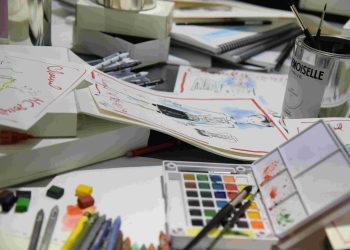Why Traditional Design Critiques Fall Short
Conventional wisdom tells us that the primary role of a critique session is to find flaws. And while identifying areas of improvement has its place, the obsession with “fixing what’s broken” often overshadows deeper opportunities for creativity and innovation. Too often, critiques devolve into what psychologists refer to as
confirmation bias
, where participants search for evidence to confirm preconceived notions rather than challenging them.
From my early years as a fledgling designer, I remember walking into my first critique session feeling both excited and terrified. The feedback I received, however, was perplexing—it ranged from overly generic platitudes to hyper-specific nitpicks. I walked away confused, without a clear sense of what I had done right or how I could improve. Sadly, my experience wasn’t unique.
Reimagining Critique: A Holistic Framework
Imagine a critique process as a symphony rather than a cacophony. A symphony, by definition, is harmonious, with each instrument contributing uniquely to a collective masterpiece. Similarly, an effective critique should orchestrate diverse perspectives to improve the whole, not just dissect the parts.
Here’s where insights from psychology and philosophy become invaluable. Carl Rogers, a key figure in humanistic psychology, emphasized the importance of active listening and empathy in fostering growth. These principles, often applied to personal development, can transform critique sessions into collaborative problem-solving environments.
Key Techniques for Effective Critique
- Define Clear Objectives:
Establish specific questions and goals for the critique up front. For instance, is the aim to validate usability, explore aesthetic harmony, or align with a broader strategic vision? - Avoid the “Fix-it” Mentality:
Instead of immediately suggesting solutions, start with questions. Ask, “What is the design trying to achieve?” or “Why was this approach chosen?” Such inquiries invite reflection and dialogue rather than defensiveness. - Encourage Diverse Perspectives:
The best insights often come from those outside the immediate design world. A marketing manager might see a branding inconsistency that a designer missed, or a developer might challenge whether a feature aligns with technical constraints. - Balance Positive and Constructive Feedback:
Neuroscientific research has shown that people remain more receptive to feedback when it’s balanced. For every critique, offer praise for an aspect that works well. - Practice Radical Candor:
Borrowing from Kim Scott’s philosophy, radical candor means caring personally while challenging directly. Critique should never feel like a personal attack, but it also shouldn’t sugarcoat hard truths.
Design Critique in the Age of AI
As artificial intelligence increasingly shapes design processes, design critique must also evolve. AI tools like Figma’s Auto Layout or Adobe’s Sensei may automate parts of the design process, but they bring with them a host of ethical and practical questions. What biases might AI introduce? How do these tools refine—or hinder—human creativity?
Looking ahead, the role of critique will likely shift from micro-level design adjustments to broader discussions about ethical frameworks, accessibility, and systemic impact. Critique of the future should focus on asking larger, more profound questions: “Does this design empower users?” or “Does this solution address root societal challenges?”
Embracing a Learning Mindset
Critique, at its core, is an exercise in learning—learning about others’ perspectives, the challenges of the problem space, and your own blind spots. Just as design itself thrives on iteration, so too must our approach to critique.
For aspiring designers, seasoned professionals, and those in between, the best way to hone your critique skills is through continuous education and dialogue. Read widely, from behavioral economics to art history. Engage with professionals across disciplines. Above all, be willing to question your assumptions and evolve.
Turning Insights Into Action
A critique session is only as valuable as the action it inspires. Here are concrete steps you can take to improve your critique practice:
- Schedule regular critique sessions with your team and prepare a focused agenda.
- Facilitate discussions with a neutral moderator to ensure fairness and inclusivity.
- Document feedback and follow-up with specific action points linked to project goals.
- Experiment with new critique frameworks and iterate based on what works best for your team dynamics.
Remember, the ultimate goal of critique isn’t just to advance the project—it’s to advance the people behind the project, fostering both individual and collective growth.











